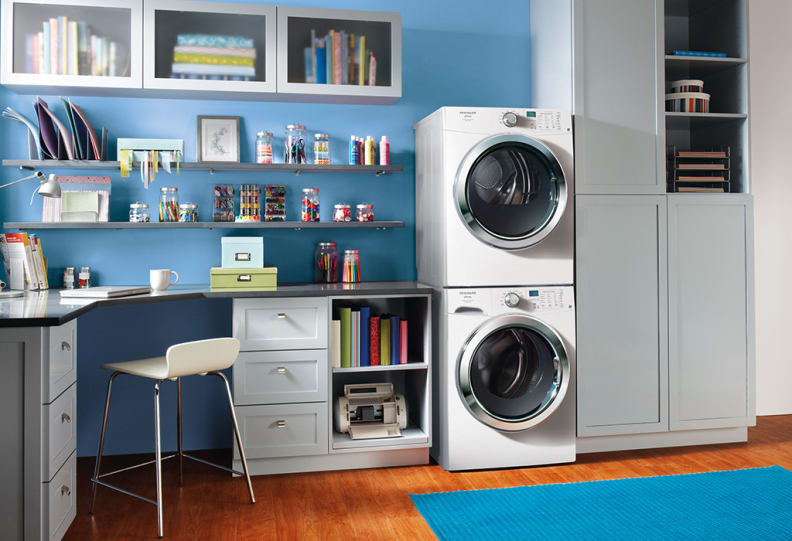Which Laundry Machine Is Right for Your Apartment?
Despite what you may think, you do have options.
 Credit:
Frigidaire
Credit:
Frigidaire
Products are chosen independently by our editors. Purchases made through our links may earn us a commission.
If you live in an apartment or condo, you might feel like you're stuck with the laundry unit that came with your home. But believe it or not, you actually have plenty of options for your small living space.
{{brightcove '4163751296001'}}
There are three types of washers and dryers that were designed for homes like yours: combination washer/dryers, compact stackable laundry pairs, and all-in-one laundry centers.
While none of these machines can match the raw cleaning performance or capacity of full-size machines, they each offer urbanites a way to get their laundry done without spending a fortune in quarters.

Combos
Combination washer/dryers, or combos, are exactly what they sound like: one machine that acts as both a washer and a dryer. Due to their limited mass-market appeal, there are few on the market. In fact, the majority of combos are made by a single manufacturer: LG.
These machines are ventless, giving them a little extra flexibility in terms of placement, and some can even be hooked up to sinks. Most come in 24-inch width, making them ideal for laundry closets in apartments, but some full-size models do exist. You can even buy one from LG that uses a regular 110-volt outlet.
Due to their small size and low power draw, these machines take much longer to complete a cleaning cycle and can only handle smaller loads. That means they don't mesh well with the "laundry day" mentality common in American households. If you own one of these machines, you'll probably have to run a smaller load every few days.
{{amazon name="Westland WD2100XC White Vented Combo Washer/Dryer", asin="B002PZA2UG", align="right"}} There are a few other shortcomings: These machines are high-maintenance, with multiple filters that need to be cleaned out regularly, and they won't get your clothes bone dry. And the price tag? Expect to pay anywhere from $900 to $1,500.
Still, they do have one big advantage over other laundry solutions: You can just set it and forget it. Since combos are both washer and dryer, all you have to do is load them up and hit start. No more switching loads! (In fact, these machines were originally marketed as time-savers for busy housewives.)

Stackable Compacts
These machines are 24-inch washers and dryers that can be stacked vertically in laundry closets.
Unlike combos, which are pretty hard to find, just about every manufacturer makes at least one compact washer and dryer. And thanks to Blomberg, you'll soon be able to purchase a compact heat-pump dryer in the U.S., too. All compact washers are front-load, and most compact dryers are ventless.
Many compacts are actually European models that have been retrofitted for the U.S. market. (Europeans use 24-inch machines, not our full-size behemoths.) Despite their smaller size, most compacts still require a 240 volt outlet. However, some compact washers plug directly into their corresponding dryer, meaning you only need one wall plug.
Ventless compact dryers take longer to get the job done than full-size machines, but they give you one big advantage over both combos and laundry centers. With compacts you have two separate machines, so if the washer or dryer fails, you only have to replace one machine instead of your whole laundry setup.

Laundry Centers
These rigs split the difference between combos and compact stackables. Laundry centers fuse a washer and a dryer into a single machine, but with separate washer and dryer units that can run at the same time.
The majority of laundry centers are 27 to 30 inches wide, making them very popular with apartment owners. They all use a single 240-volt plug and require a proper dryer vent. And if you prefer top-load to front-load (even though you shouldn't), you're in luck. Thanks to their fundamental design philosophy, all laundry centers feature top-load washers.
Of course, there are downsides here, too. These machines aren't great performers, and if one half breaks, you need to replace the whole machine. Unfortunately, they aren't cheap either: Laundry centers usually come in at around $1,200. But given the fact that you're buying two machines in one, the price makes pretty good sense.
Related Video
{{brightcove '4001465592001'}}
